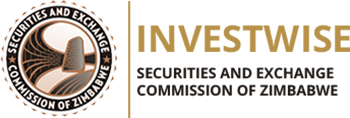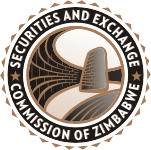As investors, we would all like to effortlessly beat the market, buy and sell “great” investments based on brilliant timing, instinct and a little luck. But most of us realize it is not that easy. While intuition is undoubtedly a part of the investment process, it is just part of the process. While, it may seem less exciting, the investment process is the workhorse behind any sustainable investment strategy as it simply outlines the steps required to create and maintain an investment portfolio aligned with specific goals and objectives while seeking to manage investment risk. Sequencing of actions involved from defining risk parameters to asset allocation, due diligence, investment selection, portfolio monitoring and performance evaluation are just but some of the components of the investment process.
One can think of the investment process as the process of building a house. You would not begin by putting in place the roof or constructing walls. The starting point is a home plan that reflects your vision for the final product. In developing the plan, you make certain decisions to ensure that the home you build is aligned with your needs and goals. Once the plan is done, you now have a footprint to start your construction project. Once your home is built, it will require regular care, maintenance and upgrading. Later, you may want to make some changes, renovating certain rooms to reflect your changing needs or current design trends. A strong foundation and solid construction will provide greater flexibility in accommodating these changes down the road.
Likewise think of your investment process as the place where your wealth will live and potentially thrive. It should reflect today’s needs and goals while offering the flexibility to accommodate tomorrow’s growth. Whether you develop and follow your own investment process, or work with an investment professional, certain steps are critical in pursuing the results you seek. At a glance, these steps include:
Setting a goal starts with understanding why you are interested in investing. The most obvious answer would be: “To make money!” But knowing or at least having a sense of what your goals are (or what financial outcome you want to achieve) is important to help determine which investments are right for you. In other words, where would you like to be financially, and how much do you have to invest to get there? Your goals should be as specific as possible, so that you have the best idea of what you will need to do to achieve them. A smart investor does not rely on charm or good luck. Instead, they take time to consider their investment goals.
Virtually every investor has the same basic goal i.e. to achieve the maximum return at a tolerable level of risk. Accomplishing that balance means knowing yourself as an investor, knowing your risk profile. Risk profile depends on one’s ability to take risks and one’s willingness to do so. Generally, every individual has their own risk-taking capacity; some are “risk- takers” and some “risk-averse type of a person. To determine their risk profile, investors should ask themselves the following pertinent questions:
- How willing are you to accept more risk to earn greater returns?
- What are the time horizons of your investment goals?
- What life stage are you in? In other words, are you near the low end or closer to the peak of your income-earning potential?
Knowing your risk profile will help you determine whether you should pursue an aggressive, moderate or conservative investment programme, in other words, an investment strategy that fits your risk profile.
Before you jump into any investment, make sure you know and understand the product you are investing in. Never invest in something you do not know or understand. Thoroughly evaluate the investment product or service. Do your research, gather facts, assess the product’s suitability versus your risk and return expectations, understand the product’s key features, fees, commissions, benefits and risks. Spend as much time as you can, reading about the investment alternatives and the larger economy in general. Whether you work with investment professionals or on your own, it is wise to do your homework. Research is part of an investor’s due diligence.
Before investing or paying for any investment advice, it is advisable to do background checks on any investment professional with whom you intend to do business with. Investors should check to see whether the entity they are about to deal with is licensed with the Securities and Exchange Commission of Zimbabwe (SECZ). SECZ has regulatory jurisdiction over all capital market players who trade, deal, manage or market securities. Dealing with licensed capital market intermediaries is safer and enables investors to have access to regulatory protection.The licensing status of any entity is easy to get, one phone call or web search may save investors from sending money to a con artist, an unscrupulous financial professional, or a disreputable firm.
To avoid any future shocks, investors should hedge risk by not putting all eggs in one basket or concentrate investment portfolio. To minimize risks and boost potential returns, always invest according to your investor profile in different product types, asset classes and industry sectors. This helps in managing systematic risk as different categories of investments respond to changing economic and political conditions in different ways. By including different asset classes in one’s portfolio, one increases the probability that some of their investments will provide satisfactory returns even if others are flat or losing value. A balanced portfolio should include several asset classes to reduce the risk of a downturn in one sector.
Once you have invested in the capital markets e.g. through buying shares, it becomes your responsibility to monitor your investments through keeping up to date with the company’s situation and news in general. One should keep track of value adding information on general market conditions, economic issues and other factors affecting one’s investments. Sources of information include the company’s prospectus, annual reports, news on important events or important changes, and research.
When evaluating portfolio performance, it is critical to measure performance within the context of your investment strategy. Consider whether your market expectations were correct. If not, why not? Use these insights to update your expectations and investment portfolio accordingly. Circumstances and opinions change. This is part of investing. The key is to properly process and assess all new information and implement any changes accordingly.
While the investment process is straightforward—set goals, construct and implement the portfolio, and evaluate performance over time—much like in building a home, the devil is in the detail. Think about the sheer number of decisions that go into designing and constructing the kitchen alone. How big will it be? What type of finishes will you choose for cabinets, counter tops, flooring etc? The investment process is similar in that multiple decision points are encountered and significant due diligence is required to implement an investment strategy designed to pursue specific goals and objectives. The process involves constant monitoring of the economy and capital markets while continually researching and analyzing investment opportunities.

